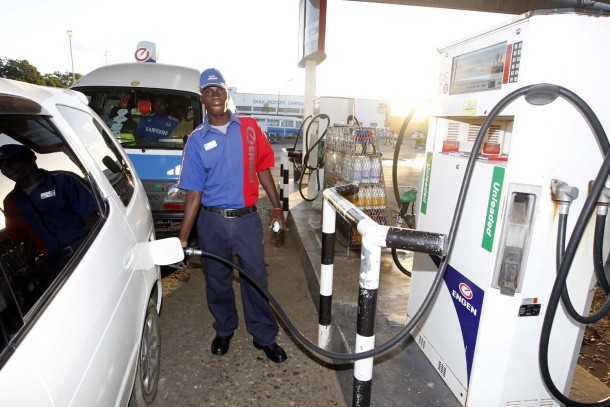Fuel prices are on the rise again but saving fuel in your car doesn’t have to mean spending big on a super-economical hybrid or a zero emissions electric vehicle. You can instantly improve your current car’s fuel economy by as much as 10% with these green driving tips.
Fuel is expensive stuff and getting costlier but most motorists know that already. The filling station price boards and those swirling numbers on the fuel pumps serve as regular painful reminders of the huge wads of cash we’re all incinerating in our cars.
But that’s not even the half of it. Burning petrol and diesel costs the planet as well. The more we burn, the more CO2 is pumped into the atmosphere in combination with a cocktail of other harmful emissions that do nobody much good.
The obvious answer to the cost of fuel, both on our pockets and the environment, is to use less of it.
choose the right car
What we would say is that it always pays to choose your car wisely. Think about what you’ll use it for, where you’ll drive it and how many miles you’ll do. Then choose a car that does the job but doesn’t have size, performance or features that you’ll hardly ever use.
get it serviced
Cars are more efficient when they’re firing on all cylinders, so to speak. Modern cars require far less maintenance than they used to but ignoring the service intervals laid down by the manufacturer is a recipe for all kinds of trouble, including reduced fuel economy.
When that little spanner illuminates on the dash, it’s time to book it in at the garage.
keep it well-oiled
We all know that we should check the engine oil in our cars on a regular basis but how many of us actually do it? If you don’t, you should, and if a top-up is needed, you should also make sure you use the right kind of oil for your car. Details of the manufacturer’s recommended oil should be in the handbook.
The oil acts as a buffer between the engine’s mechanical parts so looking after your lubricant helps keep everything running smoothly and efficiently.
inflate your tires
A big part of improving your car’s fuel efficiency is reducing the amount of energy that’s needed to move it along the road. It doesn’t take a nuclear physicist to realize that if a car’s tires look like they’re filled with custard, the engine’s job is going to be that much tougher than if they were correctly inflated with high pressure air.
For every 5% (equivalent to around 2 PSI) that a car’s tyres are underinflated, fuel consumption increases by 1%. Tyre wear increases too. Check your tyre pressures every month and re-inflate them to the manufacturer’s recommendations where necessary.
choose the right tires
There are lots of different tires out there on the market and most motorists have felt the temptation to simply fit the cheapest. That’s not the way to go if saving fuel is your top priority though.
Specialist eco-friendly tyres might cost a little more than the bargain basement options but they’re designed to save you money in the long run. These tyres use special rubber compounds with lower rolling resistance that can lead to fuel savings of up to 5%
choose the right fuel
Some motorists report that using premium or high octane fuel improves their car’s economy but the oil companies are usually careful not to make claims to this effect.
Such fuels often contain more advanced detergents which will keep a car’s engine cleaner and this can have efficiency benefits but there are no direct economy gains from choosing a higher octane fuel than the car’s manufacturer recommends.
What can help is buying your fuel from a reputable retailer to ensure you’re getting the best quality product for your money. Shop around and if you find that a certain brand of fuel gives you better economy and value for money, stick with it.
plan your journey
The car is such an important part of all our lives that it’s easy to just jump in and drive off without really thinking about where we’re going. It always pays to plan your journey in advance: that way you should get there quicker and use less fuel en route.
The most direct route is usually best but adapt it to avoid congestion and to use faster roads. Motorway travel is always more fuel efficient than stop-start urban trips.
If possible, think about making journeys at times of day when the roads are quieter and don’t make multiple trips if you can kill two or three birds with one stone.
A car’s engine uses more fuel while it’s warming up so a single journey with three or four stops on the way is better than heading out and back on three or four separate occasions.
don’t get lost
Getting lost is a great way to waste fuel. Missing your motorway exit or driving aimlessly around a labyrinthine one-way system for half an hour is also pretty frustrating and a major cause of in-car arguments. Don’t do it!
Proper route planning is essential but mistakes do happen so take a decent map as back-up and investing in a satellite navigation system may also be a good idea. The latest sat-navs can re-route you around traffic problems or even suggest the most economical route to your destination.
turn off the air-con
In-car air-conditioning was once the height of luxury but nowadays if your vehicle hasn’t got it, you’re probably driving a tractor. Contrary to popular belief though, we can’t just drive along basking in icy cool air without paying a penalty in fuel consumption.
Air-conditioning and other electrical systems place heavy demands on a car’s battery and it’s the engine that has to do the work of re-charging it. In some circumstances, using the air-con can hit fuel economy by a massive 20%.
The message is to use it sparingly along with the heated windscreen, the champagne cooler and the huge window-rattling stereo system you may or may not have had installed.
shut the windows
At motorway speeds, the additional drag of having the window open can affect economy and air-conditioning systems become more efficient because of the increased air-flow. As yet, there’s no data on the aerodynamic effects of a sunburn elbow propped on the window sill.
lose the roof rack
Car manufacturers spend countless hours using advanced computer models and wind tunnel technology to make their products as aerodynamic as possible, then their customers go and put an enormous roof rack on the top.
Fitting a roof rack will always be a more cost effective option than buying a bigger car for that family holiday but when you get home, take it off.
Almost anything that disrupts the airflow around your vehicle will harm its aerodynamic performance and lead to increased fuel consumption.
empty the boot
Extra weight in your car puts extra demands on the engine and leads to higher fuel consumption and emissions. It also hampers most aspects of the car’s performance from acceleration to handling and braking.
Some weight is essential; few people would consider going on a diet to save fuel and it probably wouldn’t have much effect if they did but we all carry stuff around in our cars that we don’t have to.
It’s estimated that every 30kg carried in a car reduces fuel economy by 1%. That means removing the miscellaneous items cluttering up your car boot could bring real savings, particularly if any of them happen to be a bag of cement or an anvil. Even fuel itself is hefty stuff so don’t fill the tank unless you need to.
turn off the engine
Lots of modern cars have what’s known as stop-start technology, which automatically shuts off the engine when the car is stationary to save fuel. If your car doesn’t have this feature, you can still make savings by turning off the ignition yourself.
An idling engine burns around 3.5 liters of fuel an hour so all the time we spend stuck in traffic, waiting at the lights or parked-up with our engines running can add up to a lot of fuel burned and a lot of CO2 released without actually going anywhere.
You can’t turn off your engine every time you come to a standstill but if the car is going to be motionless for more than around 15 seconds, you’ll probably save fuel by turning it off.
drive smoothly
OK, so we’ve chosen the car, looked after it, planned the route, turned off the unnecessary electronics and checked the back seat for sumo wrestlers. Now it’s time to drive.
The key thing to remember when driving to maximize fuel economy is to be smooth – actually it helps with all other kinds of driving too. All your inputs to the steering, throttle and brakes should be gentle and progressive.
You’re looking to gain speed without stressing the engine unduly and then maintain it. Stomping the pedals and flinging the car around the place will not have the desired effect.
don’t rush
Economical driving is best achieved when you’re in a calm frame of mind. Try to relax behind the wheel and don’t rush, the smooth control inputs you’re looking for should follow. Over-enthusiastic or aggressive drivers use more fuel.
shift up earlier
In cars with a manual gearbox, move up through the gears quickly. This reduces the engine’s workload by getting the car into its highest and most economical gears sooner.
You don’t want the engine to be struggling to pull a gear that’s too high but try to keep the revs as low as possible with the engine running smoothly. As a general rule, if you’re driving a petrol car try to change up at around 2,500rpm. In a diesel 2,000rpm would be closer to the mark.
reduce your speed
Driving more slowly can bring big fuel economy benefits.
observe and anticipate
The smooth and economical driving style we’re looking for is made possible by good observation and anticipation. It’s crucial to give yourself enough space and time on the road to predict what’s going to happen up ahead and react to it.
By driving too fast or too close to the car in front, you limit your reaction times and force yourself to brake hard, wasting the kinetic energy you’ve built up.
With more room and less speed, you can decelerate slowly, coasting to a halt as the traffic in front slows. Get it right and the traffic may have cleared by the time you arrive so there’s no need to stop at all.
give someone a lift
Now that your car is optimized for green driving and you’re fully clued-up on economical driving techniques, you can maximize your fuel savings by giving someone else a lift.
One car is almost always more efficient than two so taking someone along for the ride is a great way to reduce your carbon footprint. It’ll save you money too, provided they return the favor.
leave your car at home
The ultimate sanction when it comes to saving fuel is not to use the car at all.
If a journey can be made on foot, on a bike or by public transport, maybe you could think about doing it. Make the effort to seek out alternatives to car travel a few times a month and you’ll be greener and richer as a result.







![Here are some of the best tuned cars in kenya by state of the art garages [PHOTOS]](../../../blog/wp-content/uploads/2013/11/29402_10151301757042065_340470732_n-e1384498044289.jpg)

![Top 20 Used Cars to Avoid Buying in Kenya – [PHOTOS]](../../../blog/wp-content/uploads/2013/11/top-used-unreliable-cars-to-avoid2-100x70.jpg)



